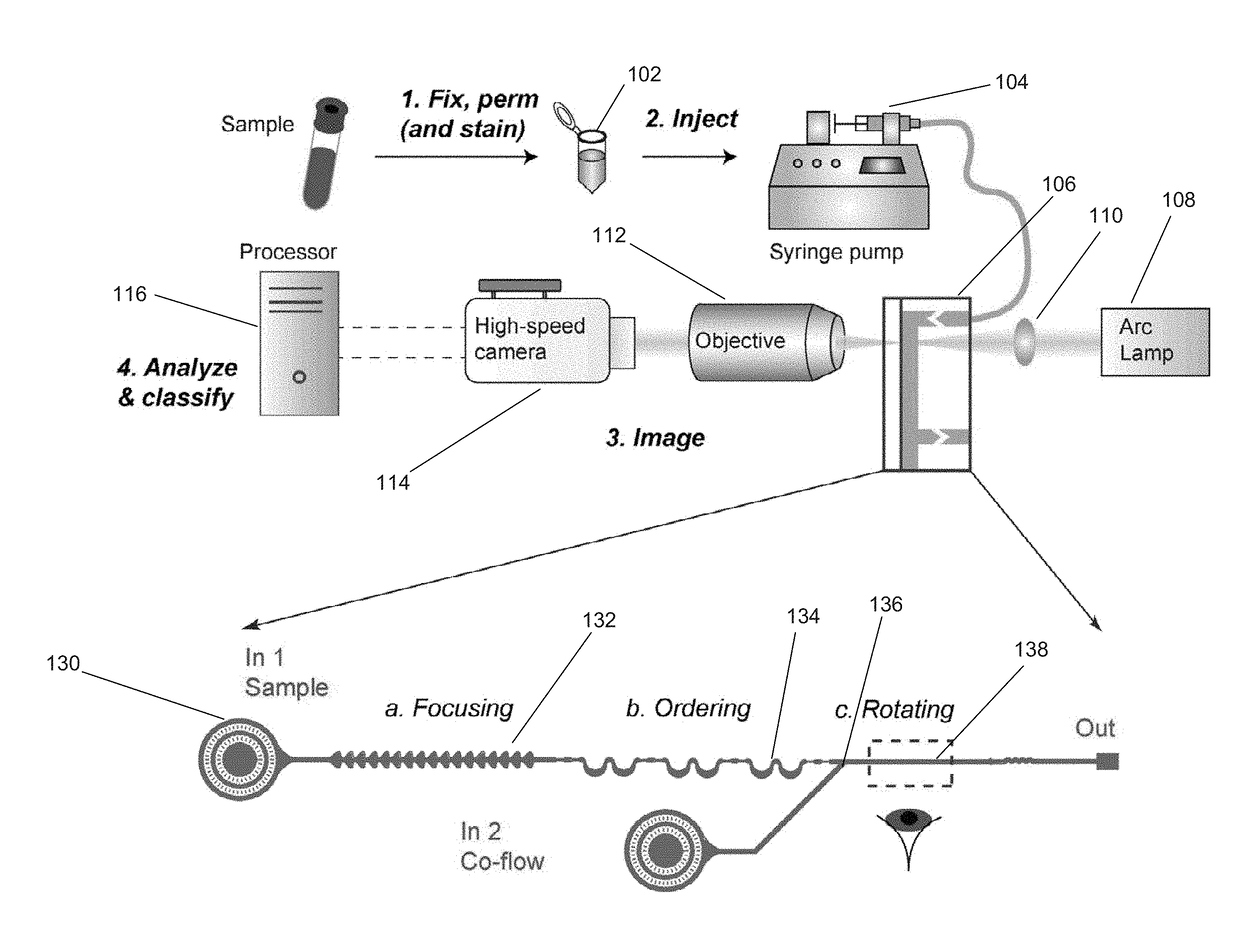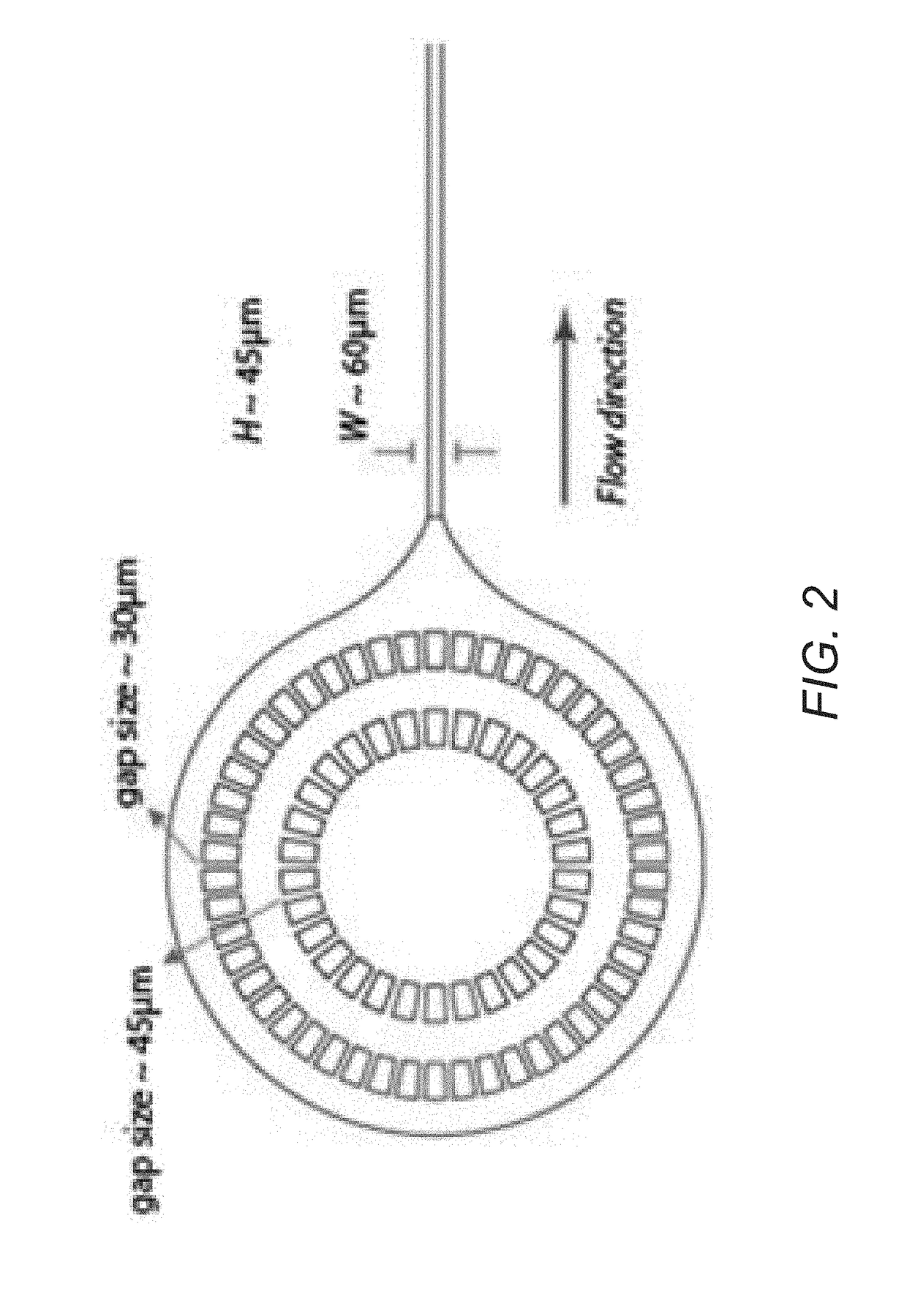Systems and Methods for Automated Single Cell Cytological Classification in Flow
a single cell cytological and flow technology, applied in the field of imaging of cells in flow, can solve the problems of difficult to detect rare cells or specific feature characteristics of diseases, subjective, qualitative, time-consuming existing methods, and still challenges
- Summary
- Abstract
- Description
- Claims
- Application Information
AI Technical Summary
Benefits of technology
Problems solved by technology
Method used
Image
Examples
Embodiment Construction
[0042]Systems and methods in accordance with various embodiments of the invention are capable of rapid analysis and classification of cellular samples based on cytomorphological properties. In several embodiments, cells suspended in a fluid medium are passed through a microfluidic channel, where they are focused to a single stream line and imaged continuously. In a number of embodiments, the microfluidic channel establishes flow that enables individual cells to each be imaged at multiple angles in a short amount of time. A pattern recognition system can analyze the data captured from high-speed images of cells flowing through this system and classify target cells. In this way, the automated platform creates new possibilities for a wide range of research and clinical applications such as (but not limited to) point of care services.
[0043]Systems and methods in accordance with a number of embodiments of the invention utilize inertial lift forces in a miniaturized fluidic device to posi...
PUM
| Property | Measurement | Unit |
|---|---|---|
| Reynolds numbers | aaaaa | aaaaa |
| imaging system | aaaaa | aaaaa |
| speed | aaaaa | aaaaa |
Abstract
Description
Claims
Application Information
 Login to View More
Login to View More - R&D
- Intellectual Property
- Life Sciences
- Materials
- Tech Scout
- Unparalleled Data Quality
- Higher Quality Content
- 60% Fewer Hallucinations
Browse by: Latest US Patents, China's latest patents, Technical Efficacy Thesaurus, Application Domain, Technology Topic, Popular Technical Reports.
© 2025 PatSnap. All rights reserved.Legal|Privacy policy|Modern Slavery Act Transparency Statement|Sitemap|About US| Contact US: help@patsnap.com



